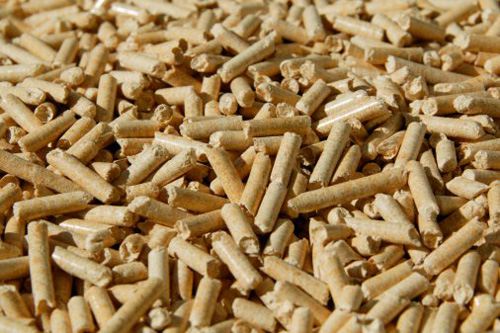Home>>News
Machineryshops.com
Tips on Pellet Making Process
Purchasing a pellet mill is actually a very small part of been able to produce wood or biomass pellets. On the face of it making pellets in a pellet mill may seem very straight forward, you put wood or biomass into the pellet mill and pellets come out the other end. Well, the reality could not be further from the truth as quality wood and biomass pellet compression relies on a combination of principles. These include proper material preparation, proper pellet mill operation and maintenance. However, it is still possible for even the average homeowner to own and operate a small pellet mill. As with every process, it just about knowing what and when you have to do.
Changes in Raw Material Particle Size
Before pellet compression in the pellet mill can take place the wood, straw, grass or any other form of biomass must be reduced in size. One fact that is not widely stated however is one of the most important facts in pellet production, “Only a raw material of consistent quality can produce consistent quality pellets". Part of this consistency is the size of raw material particles used in the pellet mill. Particles, which are too small or too large, can severally affect pellet quality and increase energy consumption.
Changes in Raw Material Moisture Content, Pellet Quality and Production Rates
One of the reasons pellet fuel is so popular is pellets have moisture content below 10%. This enables the pellets to burn very efficiently, and produce virtually no smoke during combustion. Pellet production is a high temperature process. The right moisture content will produce the best quality pellets, reduce energy consumption and reduce pellet mill downtime.
Changes in Raw Material Composition and the Inclusive on of Binders and Lubricants
In pellet production every raw material behaves differently, and some materials produce quality pellets easier than others. Depending on the equipment used, the composition of the raw material may need to be changed to produce quality pellets at a reasonable productivity. Changing the composition can include adjusting particle size or moisture content. However, it may also include adding binders and lubricants to help produce higher quality fuel pellets.
Changes in Raw Material Pellet Mill Feed Rate
Another adjustment that is not well known to impact on pellet production is the rate of feed into the pellet mill. Adjustments on feed rate and maintaining a consistent feed rate can be the key difference to how well the pellet mill operates, even if the raw material is perfectly prepared.
Changes in Raw Material Conditioning and Steam
Conditioning is the pre-treatment of the raw material before it reaches the pellet machine. Conditioning can include specific mixing techniques and the introduction of additional water or steam. Steam can be used to pre-anneal the raw material and start the lignin melting process. Though conditioning can have several benefits in some cases the benefits are negligible and in other cases it is simply not practical to use conditioning. However, generally for wood pellet production steam is used.
Changes in Pellet Mill Operating Temperatures
Temperature is a key requirement in pellet production. Unless a certain temperature is reached in the pellet mill natural lignin will not melt. It is not possible to produce some biomass pellets for example wood pellets without sufficient heat. However, if the temperature is too high this can damage the pellet mill and particular consumables such as the pellet mill die, rollers, bearings and seals.
Changes in Pellet Mill Roller and Die Clearance
Another adjustment that can impact heavily on how successfully the pellet mill operates is the distance between the roller and die template. The roller and die are wearing consumable parts, due to the abrasive nature and pressure of compression. The distance set between the roller and die can impact on how much energy the pellet mill uses, the quality of the pellet, pellet mill productivity and the amount of fines produced. Correctly setting up the die on a pellet mill will also increase the life of the roller and die, and reduce the cost of changing these consumable parts.
Changes in Pellet Mill Die Template Rotation Speed
The speeds at which the roller and die turn affect the complex relationships during pellet compression. Some materials require a greater time under compression, and therefore require a slower rotation speed. Also, the speed and torque requirements of the pellet mill change.
Changes in Pellet Mill Die Design and Metal Used
Many different forms of metal alloy are used to produce pellet mill die templates. Different metal alloys have specific advantages and disadvantages. Using the correct alloy is critical to reduce wear and increase production. The type of metal used also affects the finish of the die holes.
Reviews
Write a review
If you would like to write a review, please login first.










